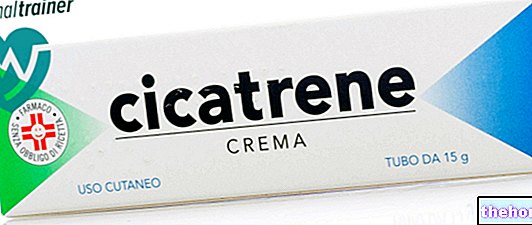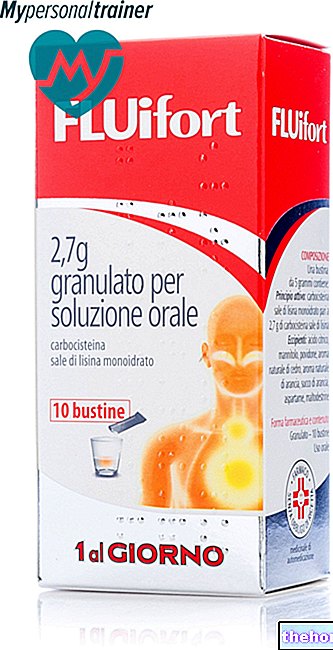Active ingredients: Flurazepam
Felison 15 mg hard capsules
Felison 30 mg hard capsules
Why is Felison used? What is it for?
Therapeutic drug category
Hypnotic and sedative benzodiazepine derivative.
Therapeutic indications
Short-term treatment of insomnia.
Benzodiazepines are indicated only when insomnia is severe, disabling and subjects the subject to severe discomfort.
Contraindications When Felison should not be used
Myasthenia gravis. Hypersensitivity to the active substance (flurazepam), to benzodiazepines or to any of the excipients.
Severe respiratory insufficiency. Severe hepatic insufficiency. Sleep apnea syndrome.
Precautions for use What you need to know before taking Felison
TOLERANCE
Some loss of efficacy to the hypnotic effects of benzodiazepines may develop after repeated use for a few weeks.
DEPENDENCE
The use of benzodiazepines can lead to the development of physical and psychological dependence on these drugs. The risk of addiction increases with dose and duration of treatment; it is greater in patients with a history of drug or alcohol abuse. Once physical dependence has developed, the abrupt termination of treatment will be accompanied by withdrawal symptoms.
These can consist of headache, body aches, extreme anxiety, tension, restlessness, confusion and irritability. In severe cases, the following symptoms may occur: derealization, depersonalization, hyperacusis, numbness and tingling of the extremities, hypersensitivity to light, noise and physical contact, hallucinations or seizures.
Rebound insomnia: A transient syndrome in which symptoms that led to treatment with a benzodiazepine recur in an aggravated form may occur upon discontinuation of treatment. It may be accompanied by other reactions, including mood changes, anxiety, restlessness or disturbances sleep.
Since the risk of withdrawal or rebound symptoms is greater after abrupt discontinuation of treatment, a gradual decrease in dosage is suggested.
DURATION OF THE TREATMENT
The duration of treatment should be as short as possible (see "Dose, method and time of administration") and should not exceed 4 weeks including a gradual withdrawal period.Extension of therapy beyond this period should not occur without re-evaluation of the clinical situation
It may be helpful to inform the patient when treatment is started that it will be of limited duration and to explain precisely how the dosage should be progressively decreased.
Furthermore, it is important that the patient is informed of the possibility of rebound phenomena, thus minimizing the anxiety about these symptoms should they occur when the drug is discontinued.
When using benzodiazepines with a long duration of action, it is important to warn the patient that abrupt change to a benzodiazepine with a short duration of action is not recommended, as withdrawal symptoms may occur.
AMNESIA
Benzodiazepines can induce antegrade amnesia. This occurs most often several hours after ingestion of the drug and, therefore, to reduce the risk, it should be ensured that patients can have 7-8 hours of uninterrupted sleep (see "Side Effects").
PSYCHIATRIC AND PARADOX REACTIONS
When using benzodiazepines it is known that reactions such as restlessness, agitation, irritability, aggression, disappointment, anger, nightmares, hallucinations, psychosis, altered behavior can occur. Should this occur, the use of the medicinal product should be discontinued.
Such reactions are more frequent in children and the elderly.
SPECIFIC GROUPS OF PATIENTS
Benzodiazepines should not be given to children without careful consideration of the actual need for treatment; the duration of treatment should be as short as possible.
Elderly people should take a reduced dose (see "Dose, method and time of administration").
Benzodiazepines may be associated with an increased risk of falls due to adverse reactions such as ataxia, muscle weakness, drowsiness, drowsiness, fatigue; therefore it is recommended to treat elderly patients with particular caution. A lower dose is also recommended. recommended for patients with chronic respiratory failure due to the risk of respiratory depression.
Benzodiazepines are not indicated in patients with severe hepatic insufficiency, as they can precipitate encephalopathy.
Benzodiazepines are not recommended for the primary treatment of psychotic illness. Benzodiazepines should not be used alone to treat depression or anxiety associated with depression (suicide can precipitate in such patients).
Benzodiazepines should be used with extreme caution in patients with a history of drug or alcohol abuse. In case of prolonged treatment it is advisable to carry out checks on the blood picture and liver function.
Interactions What drugs or foods can change Felison's effect
Tell your doctor or pharmacist if you have recently taken any other medicines, even those without a prescription.
The association with other psychotropic drugs requires caution and vigilance on the part of the physician to avoid unexpected undesirable effects from interaction.
Concomitant intake with alcohol should be avoided. The sedative effect may be enhanced when the medicinal product is taken in conjunction with alcohol. This adversely affects the ability to drive or use machines.
Association with CNS depressants: the central depressive effect may be enhanced in cases of concomitant use with antipsychotics (neuroleptics), hypnotics, anxiolytics / sedatives, antidepressants, narcotic analgesics, anti-epileptics, anesthetics and sedative antihistamines. narcotics can occur increased euphoria leading to an increase in psychic dependence.
Compounds that inhibit certain liver enzymes (especially cytochrome P450) may increase the activity of benzodiazepines.
To a lesser extent, this also applies to benzodiazepines which are metabolized only by conjugation.
Warnings It is important to know that:
Pregnancy and breastfeeding
Do not administer in the first trimester of pregnancy.
In the further period the drug must be administered only in case of real need and under the direct supervision of the doctor.
If the drug is prescribed to a woman of childbearing age, she should contact her doctor, both if she intends to become pregnant and if she suspects that she is pregnant, regarding discontinuation of the drug.
If, for serious medical reasons, flurazepam is administered during the last period of pregnancy, or during labor at high doses, effects on the newborn such as hypothermia, hypotonia and moderate respiratory depression, due to the pharmacological action of the drug, may occur.
In addition, infants from mothers who have taken benzodiazepines chronically during late pregnancy may develop physical dependence and may be at some risk for developing withdrawal symptoms in the postnatal period.
Since benzodiazepines are excreted in breast milk, they should not be given to breastfeeding mothers.
Effects on ability to drive and use machines
Sedation, amnesia, impaired concentration and muscle function can adversely affect the ability to drive or use machines. If sleep duration has been insufficient, the likelihood of impaired alertness may be increased (see "Interactions").
Dosage and method of use How to use Felison: Dosage
Treatment should be as short as possible.
The duration of treatment generally ranges from a few days to two weeks up to a maximum of four weeks including a gradual withdrawal period.
In certain cases, extension beyond the maximum treatment period may be necessary; if so, it should not take place without reassessment of the patient's condition
Treatment should be started with the lowest recommended dose.
The maximum dose should not be exceeded.
Considering the many forms of insomnia treatable with Felison, it is advisable to use an individual dosage whose dosage limits range from 15 to 60 mg.
The normal dose for adults is 30 mg at bedtime, for elderly and particularly debilitated people it is preferable to start therapy with 15 mg.
Patients with impaired hepatic or renal function should take a reduced dose.
The drug should be taken before going to bed.
Overdose What to do if you have taken too much Felison
As with other benzodiazepines, overdose is not expected to be life threatening unless concomitant other CNS depressants (including alcohol) are taken.
In the treatment of overdose of any drug, the possibility that other substances have been taken at the same time should be considered.
Following an overdose of oral benzodiazepines, vomiting should be induced (within 1 hour) if the patient is conscious or gastric lavage with respiratory protection undertaken if the patient is unconscious. If no improvement is observed with stomach emptying, activated charcoal should be given to reduce absorption. Special attention should be paid to respiratory and cardiovascular functions in emergency therapy.
Overdosage of benzodiazepines usually results in varying degrees of CNS depression ranging from clouding to coma.
In mild cases, symptoms include drowsiness, mental confusion, and lethargy. In severe cases, symptoms may include ataxia, hypotonia, hypotension, respiratory depression, rarely coma, and very rarely death.
Flumazenil can be useful as an antidote.
In case of accidental ingestion / intake of an excessive dose of FELISON, notify your doctor immediately or go to the nearest hospital.
If you have any further questions on the use of FELISON, ask your doctor or pharmacist.
Side Effects What are the side effects of Felison
Like all medicines, FELISON can cause side effects, although not everybody gets them.
If the dosage is not adapted to individual needs, certain side effects may appear, particularly in elderly or debilitated patients, linked to excessive sedation, such as: drowsiness during the day, dulling of emotions, reduced alertness, confusion, fatigue, headache, dizziness, muscle weakness, ataxia, double vision.
These phenomena occur mainly at the beginning of therapy and usually disappear with subsequent administrations.
Other adverse reactions have occasionally been reported including: gastrointestinal disturbances, change in libido, skin reactions, accommodation disturbances, hypotension, dry mouth, pruritus, rash, granulocytopenia, changes in blood transaminase, phosphatase , bilirubin.
Amnesia
Anterograde amnesia can also occur at therapeutic dosages, the risk increases at higher dosages. Amnesic effects may be associated with behavioral changes (see "Special Warnings" and "Usage Precautions").
Depression
A pre-existing state of depression may be unmasked during the use of benzodiazepines.
Benzodiazepines or benzodiazepine-like compounds can cause reactions such as restlessness, agitation, irritability, aggression, disappointment, anger, nightmares, hallucinations, psychosis, behavioral changes. Such reactions can be quite severe. They are more likely in children and the elderly
Dependence
The use of benzodiazepines (even at therapeutic doses) can lead to the development of physical dependence: discontinuation of therapy can cause rebound or withdrawal phenomena (see "Special warnings" and "Precautions for use"). Psychic dependence can occur. Abuse of benzodiazepines has been reported. Compliance with the instructions contained in this leaflet reduces the risk of undesirable effects.
If any of the side effects gets serious, or if you notice any side effects not listed in this leaflet, please tell your doctor or pharmacist.
Expiry and Retention
Expiry and storage on the last day of the month.
Store at a temperature not exceeding 25 ° C.
Medicines should not be disposed of via wastewater or household waste. Ask your pharmacist how to throw away medicines you no longer use. This will help protect the environment.
Keep this medicine out of the reach and sight of children.
Composition
1 capsule of 15 mg contains:
active substance - flurazepam monohydrochloride, 16.4 mg (corresponding to 15 mg of flurazepam)
1 capsule of 30 mg contains:
active substance - flurazepam monohydrochloride, 32.8 mg (corresponding to 30 mg of flurazepam)
excipients - dibasic calcium phosphate, tribasic calcium phosphate, maize starch, magnesium stearate, gelatin, titanium dioxide (E171), yellow iron oxide (E172), black iron oxide (E172), red iron oxide (E172), erythrosine (E127) .
Pharmaceutical form and content
Felison 15 mg hard capsules - 30 capsules
Felison 30 mg hard capsules - 30 capsules
Source Package Leaflet: AIFA (Italian Medicines Agency). Content published in January 2016. The information present may not be up-to-date.
To have access to the most up-to-date version, it is advisable to access the AIFA (Italian Medicines Agency) website. Disclaimer and useful information.
01.0 NAME OF THE MEDICINAL PRODUCT
FELISON
02.0 QUALITATIVE AND QUANTITATIVE COMPOSITION
One 15 mg capsule contains:
- flurazepam monohydrochloride 16.4 mg (corresponding to 15 mg of flurazepam).
One 30 mg capsule contains:
- flurazepam monohydrochloride 32.8 mg (corresponding to 30 mg of flurazepam).
03.0 PHARMACEUTICAL FORM
30 capsules of 15 mg.
30 capsules of 30 mg.
04.0 CLINICAL INFORMATION
04.1 Therapeutic indications
Felison is indicated in all forms of insomnia, especially in those characterized by difficulty falling asleep, interrupted sleep and early awakening.
Felison can also be used advantageously to regulate the sleep-wake rhythm and for the treatment of insomnia associated with chronic diseases.
Benzodiazepines are only indicated when the disorder is severe, disabling, or makes the subject very uncomfortable.
04.2 Posology and method of administration
Treatment should be as short as possible.
The duration of treatment generally ranges from a few days to two weeks up to a maximum of four weeks including a gradual withdrawal period.
In certain cases, extension beyond the maximum treatment period may be necessary; if so, it should not take place without reassessment of the patient's condition.
Treatment should be started with the lowest recommended dose.
The maximum dose should not be exceeded.
Considering the many forms of insomnia treatable with Felison, it is advisable to use an individual dosage whose dosage limits range from 15 to 60 mg.
The normal dose for adults is 30 mg at bedtime, for elderly and particularly debilitated people it is preferable to start therapy with 15 mg.
Patients with impaired hepatic or renal function should take a reduced dose.
The drug should be taken before going to bed.
04.3 Contraindications
Myasthenia gravis. Known hypersensitivity to flurazepam and benzodiazepines.
Severe respiratory insufficiency. Severe hepatic insufficiency. Sleep apnea syndrome.
04.4 Special warnings and appropriate precautions for use
TOLERANCE
Some loss of efficacy to the hypnotic effects of benzodiazepines may develop after repeated use for a few weeks.
DEPENDENCE
The use of benzodiazepines can lead to the development of physical and psychological dependence on these drugs. The risk of dependence increases with dose and duration of treatment; it is greater in patients with a history of drug or alcohol abuse. Once physical dependence has developed, abrupt termination of treatment will be accompanied by withdrawal symptoms. These may consist of headache, muscle aches, extreme anxiety, tension, restlessness, confusion and irritability. In severe cases, the following symptoms may occur: derealization, depersonalization, hyperacusis, numbness and tingling of the extremities, hypersensitivity to light, noise and physical contact, hallucinations or seizures.
Rebound insomnia: A transient syndrome in which symptoms that led to treatment with a benzodiazepine recur in an aggravated form may occur upon discontinuation of treatment. It may be accompanied by other reactions, including mood changes, anxiety, restlessness or disturbances sleep.
Since the risk of withdrawal or rebound symptoms is greater after abrupt discontinuation of treatment, a gradual decrease in dosage is suggested.
DURATION OF THE TREATMENT
The duration of treatment should be as short as possible (see "Dosage") and should not exceed 4 weeks including a gradual withdrawal period. Extension of therapy beyond this period should not occur without re-evaluation of the clinical situation.
It may be helpful to inform the patient when treatment is started that it will be of limited duration and to explain precisely how the dosage should be progressively decreased.
Furthermore, it is important that the patient is informed of the possibility of rebound phenomena, thus minimizing the anxiety about these symptoms should they occur when the drug is discontinued.
When using benzodiazepines with a long duration of action, it is important to warn the patient that abrupt change to a benzodiazepine with a short duration of action is not recommended as withdrawal symptoms may occur.
AMNESIA
Benzodiazepines can induce antegrade amnesia. This occurs most often several hours after ingestion of the drug and, therefore, to reduce the risk, it should be ensured that patients can have 7-8 hours of uninterrupted sleep (see "Side Effects").
PSYCHIATRIC AND PARADOX REACTIONS
When using benzodiazepines it is known that reactions such as restlessness, agitation, irritability, aggression, disappointment, anger, nightmares, hallucinations, psychosis, altered behavior can occur. Should this occur, the use of the medicinal product should be discontinued.
Such reactions are more frequent in children and the elderly.
SPECIFIC GROUPS OF PATIENTS
Benzodiazepines should not be given to children without careful consideration of the actual need for treatment; the duration of treatment should be as short as possible.
Elderly people should take a reduced dose (see Posology). Also a lower dose is suggested for patients with chronic respiratory failure due to the risk of respiratory depression.
Benzodiazepines are not indicated in patients with severe hepatic insufficiency, as they can precipitate encephalopathy.
Benzodiazepines are not recommended for the primary treatment of psychotic illness.
Benzodiazepines should not be used alone to treat depression or anxiety associated with depression (suicide can precipitate in such patients).
Benzodiazepines should be used with extreme caution in patients with a history of drug or alcohol abuse.
In case of prolonged treatment it is advisable to carry out checks on the blood picture and liver function.
04.5 Interactions with other medicinal products and other forms of interaction
The association with other psychotropic drugs requires caution and vigilance on the part of the physician to avoid unexpected undesirable effects from interaction.
Concomitant intake with alcohol should be avoided. The sedative effect may be enhanced when the medicinal product is taken in conjunction with alcohol. This adversely affects the ability to drive or use machines.
Association with CNS depressants: the central depressive effect may be enhanced in cases of concomitant use with antipsychotics (neuroleptics), hypnotics, anxiolytics / sedatives, antidepressants, narcotic analgesics, anti-epileptics, anesthetics and sedative antihistamines. narcotics can occur increased euphoria leading to an increase in psychic dependence.
Compounds that inhibit certain liver enzymes (especially cytochrome P450) may increase the activity of benzodiazepines. To a lesser extent, this also applies to benzodiazepines which are metabolized only by conjugation.
04.6 Pregnancy and lactation
Do not administer in the first trimester of pregnancy.
In the further period the drug must be administered only in case of real need and under the direct supervision of the doctor.
If the drug is prescribed to a woman of childbearing age, she should contact her doctor, both if she intends to become pregnant and if she suspects that she is pregnant, regarding discontinuation of the drug.
If, for serious medical reasons, flurazepam is administered during the last period of pregnancy, or during labor at high doses, effects on the newborn such as hypothermia, hypotonia and moderate respiratory depression, due to the pharmacological action of the drug, may occur. In addition, infants from mothers who have taken benzodiazepines chronically during late pregnancy may develop physical dependence and may be at some risk for developing withdrawal symptoms in the postnatal period.
Since benzodiazepines are excreted in breast milk, they should not be given to breastfeeding mothers.
04.7 Effects on ability to drive and use machines
Sedation, amnesia, impaired concentration and muscle function can adversely affect the ability to drive or use machines. If sleep duration has been insufficient, the likelihood of impaired alertness may be increased (see "Interactions").
04.8 Undesirable effects
If the dosage is not adapted to individual needs, certain side effects may appear, particularly in elderly or debilitated patients, linked to excessive sedation, such as: drowsiness during the day, dulling of emotions, reduced alertness, confusion, fatigue, headache, dizziness, muscle weakness, ataxia, double vision. These phenomena occur mainly at the beginning of therapy and usually disappear with subsequent administrations.
Other adverse reactions have occasionally been reported including: gastrointestinal disturbances, change in libido, skin reactions, accommodation disturbances, hypotension, dry mouth, pruritus, rash, granulocytopenia, changes in blood transaminase, phosphatase , bilirubin.
Amnesia
Anterograde amnesia can also occur at therapeutic dosages, the risk increases at higher dosages. Amnesic effects may be associated with behavioral changes (see "Special warnings and precautions for" use ").
Depression
A pre-existing state of depression may be unmasked during the use of benzodiazepines.
Benzodiazepines or benzodiazepine-like compounds can cause reactions such as restlessness, agitation, irritability, aggression, disappointment, anger, nightmares, hallucinations, psychosis, behavioral changes. Such reactions can be quite severe. They are more likely in children and the elderly.
Dependence
The use of benzodiazepines (even at therapeutic doses) can lead to the development of physical dependence: discontinuation of therapy can cause rebound or withdrawal phenomena (see "Special warnings and precautions for use"). Psychic dependence can occur. Abuse of benzodiazepines has been reported.
04.9 Overdose
As with other benzodiazepines, overdose is not expected to be life threatening unless concomitant other CNS depressants (including alcohol) are taken.
In the treatment of overdose of any drug, the possibility that other substances have been taken at the same time should be considered.
Following an overdose of oral benzodiazepines, vomiting should be induced (within 1 hour) if the patient is conscious or gastric lavage with respiratory protection undertaken if the patient is unconscious. If no improvement is observed with stomach emptying, activated charcoal should be given to reduce absorption. Special attention should be paid to respiratory and cardiovascular functions in emergency therapy.
Overdosage of benzodiazepines usually results in varying degrees of CNS depression ranging from clouding to coma. In mild cases, symptoms include drowsiness, mental confusion, and lethargy. In severe cases, symptoms may include ataxia, hypotonia, hypotension, respiratory depression, rarely coma, and very rarely death.
Flumazenil can be useful as an antidote.
05.0 PHARMACOLOGICAL PROPERTIES
05.1 Pharmacodynamic properties
The active ingredient in Felison, flurazepam, is a 1,4-benzodiazepine. Therefore Felison is a non-barbiturate hypnotic, of a physiological type that does not alter the characteristics of sleep.
In particular, it has the ability to shorten the time of falling asleep, to reduce the frequencies of nocturnal awakenings and to increase the total duration of sleep.
Patients fall asleep on average after 20 minutes and sleep for 7-8 hours.
The exact mechanism of action of benzodiazepines has not yet been elucidated; however, benzodiazepines appear to act through various mechanisms. Benzodiazepines presumably exert their effects by binding to specific receptors at different sites within the central nervous system, or by potentiating the effects. of synaptic or presynaptic inhibition, mediated by g-aminobutyric acid, or by directly influencing the mechanisms that generate the action potential.
05.2 "Pharmacokinetic properties
Flurazepam is readily absorbed following oral administration, with sufficiently rapid elimination from plasma. The researches carried out with substance marked with 14C in position 5 have allowed to highlight, in both humans and dogs, a rapid and complete absorption and a rapid elimination from the plasma. The biotransformation is rapid and complete and the transformation pathways are similar. All the metabolites found show modifications in the N-diethylaminoethyl chain: the main metabolite in dogs is N-acetic acid, while in humans it is the analogous alcohol, namely N-ethanol. The two most pharmacologically active metabolites present are N "-desalkyl-flurazepam and N" - (2-hydroxyethyl) -flurazepam which have elimination half-lives of 47-100 hours and 10-20 hours, respectively, while flurazepam itself has a half-life of 2-3 hours, after oral administration. The peak plasma concentration of flurazepam after a single dose is 10-22 mg / l after 3 hours. Elimination is remarkably rapid and the substance administered venously disappears from the plasma with a half-life of 11 to 75 minutes.
Urine excretion after oral administration is approximately 80% of the introduced dose, of which approximately 40% of the dose is eliminated conjugated as glucuronide / sulphate.
05.3 Preclinical safety data
Toxicology
DL50:
- 500 mg / kg in mice orally
- 1650 mg / kg in rats orally
- 250 mg / kg in the i.p. mouse
- 225 mg / kg in the rat i.p.
Subacute toxicity
Evaluated with reference to DTD, in mice, rats, guinea pigs, rabbits and dogs, for consecutive periods of time ranging from 12 days (guinea pig, rabbit, dog) to 15 days (mouse and rat).
No signs of subacute toxicity occurred at the maximum doses tested, i.e. for doses 40 times higher than DTD (mouse and rabbit), 50 times higher than DTD (rat), 35 times higher than DTD (guinea pig), 36 times higher than DTD (dog).
Chronic toxicity
Evaluated for flurazepam in rats and dogs by continuous administration for 365 days.
The dose tolerated without causing major side effects resulted in:
- mg 80 / kg / day in the rat;
- 10 mg / kg / day in dogs.
Flurazepam, administered for 180 consecutive days, is free of chronic toxicity for doses up to 30 times higher than DTD (rat) and up to 20.7 times higher than DTD (rabbit).
06.0 PHARMACEUTICAL INFORMATION
06.1 Excipients
Dibasic calcium phosphate, tribasic calcium phosphate, maize starch, magnesium stearate, gelatin, titanium dioxide (E 171), yellow iron oxide (E 172), black iron oxide (E 172), red iron oxide (E 172), erythrosine (E 127).
06.2 Incompatibility
None.
06.3 Period of validity
5 years.
06.4 Special precautions for storage
Store at a temperature not exceeding 25 ° C.
06.5 Nature of the immediate packaging and contents of the package
PVC / Aluminum blister.
06.6 Instructions for use and handling
===
07.0 MARKETING AUTHORIZATION HOLDER
Bayer S.p.A. Viale Certosa 130 - Milan
08.0 MARKETING AUTHORIZATION NUMBER
Felison 15 mg - 30 cps - A.I.C. n. 022715015
Felison 30 mg - 30 cps - A.I.C. n. 022715027
09.0 DATE OF FIRST AUTHORIZATION OR RENEWAL OF THE AUTHORIZATION
Authorization date: 28/12/72 (on the market: February 1973)
Authorization renewal: June 2005
10.0 DATE OF REVISION OF THE TEXT
===




























